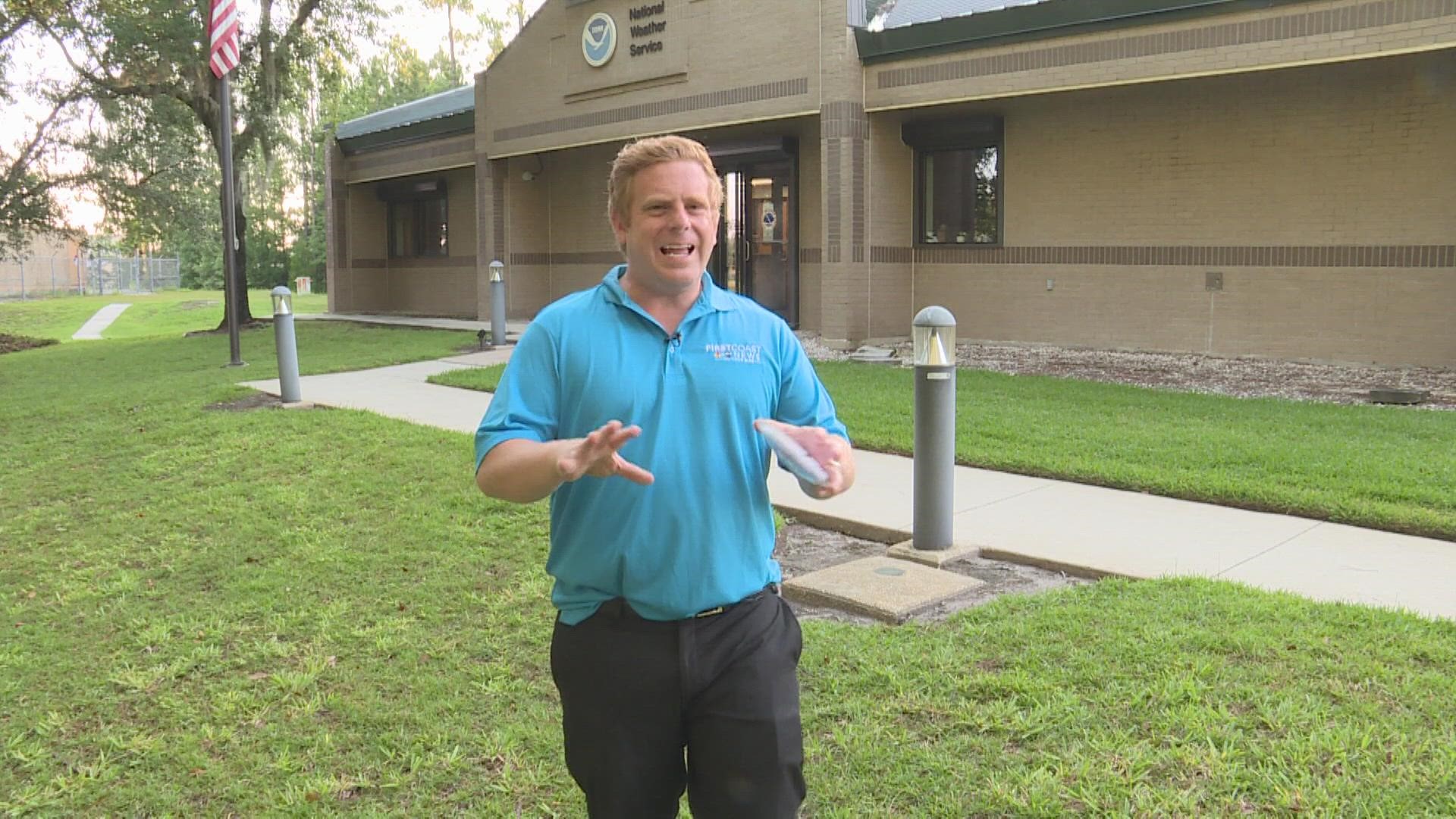JACKSONVILLE, Fla. — Meteorology is a science, and like any science field, the better information you start with the better results you will get in your final product. Forecasting the weather is no different.
This is why when creating a weather forecast, the more weather observations and initial information meteorologist and weather models have, the better the forecast will come out. Getting weather information though on the ground is easy, it's gathering that data throughout the atmosphere that can be tricky.
This is why at least twice a day, meteorologists at over 90 sites across the country launch weather balloons to get a complete picture of what's going on above our heads.
Meteorologist Deirdre Dolan at the National weather service Jacksonville says after they launch it "it will rise up about 90,000 to 100,000 feet in to the atmosphere and that takes measurements including temperature, humidity, pressure and wind speed. All that information is retrieved and sent into weather models."
This is not a birthday balloon either: hydrogen is filled in to the balloons prior to launch making them extremely flammable. This is why no electronics are allowed in the inflation room and balloons are not allowed to be launched during a thunderstorm. That is unless you want to run the risk of a mini-Hindenburg taking place.
Since air expands when it rises the balloon eventually grows to up to 30 feet wide before it burst. The radiosonde carrying all the weather sensors then falls back to earth via a parachute and possible in to your backyard.
"It's not dangerous at all, that's the purpose of the parachute to slow it down. It is labeled on the side this is a National Weather Service Instrument. Inside there is a tube attached to radiosonde and inside that is a mailing bag. So if you ever find one of these you can take out the mailing back and send it right back to the national weather service" Deirdre explained. This will be free of charge and it allows the weather service to re-use these vital peace's of equipment again.

